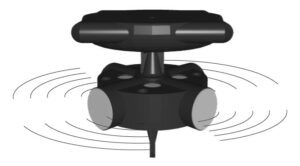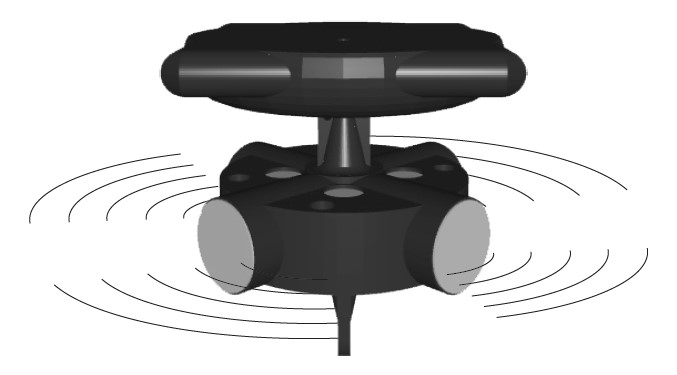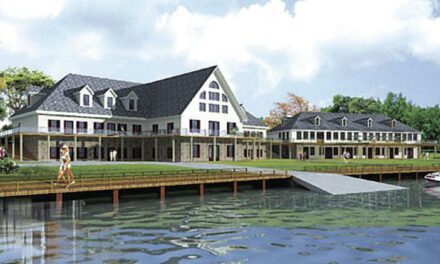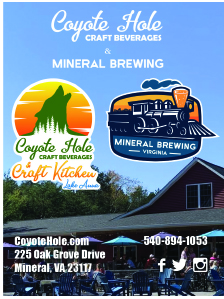
Lake Anna Civic Association’s War On Algae To Expand In 2023
By Harry Loony
The Lake Anna Civic Association (LACA) plans to continue their cyanobacteria/Harmful Algae Bloom (HAB) mitigation testing in 2023 with an expansion of the testing and research program conducted in 2022.
The 2022 Cyanobacteria Mitigation Project, or CMP, focused on the application, or discharge, of a hydrogen-peroxide based algaecide to reduce cyanobacteria cell densities in four test areas located in the upper portion of the lake north of the route 208 bridge.
LACA plans to continue research into viable cyanobacteria mitigation and remediation strategies in 2023 with another testing and demonstration effort named the 2023 Cyanobacteria Mitigation and Remediation (2023-CMR) project (https://www.lakeannavirginia.org/2023-CMR).
The 2023-CMR project plan expands research beyond the hydrogen-peroxide algaecide mitigation capabilities implemented in 2022 to include testing of ultrasound technologies for cyanobacteria control and expanded sediment sampling to inform future phosphorus reduction/sequestration efforts.
In addition, algaecide treatments will be repeated in a small area of Goldmine Creek that was treated in 2022.
LACA is excited to test another cyanobacteria mitigation technology in the 2023-CMR project. Like algaecides, ultrasound provides an economical and environmentally friendly approach to cyanobacteria control.
LACA is procuring four ultrasound generators that will be mounted on docks in three test areas. Ultrasound generators produce sound waves at thousands of frequencies with power levels that are lower than most fish finders. Thus, other plant and animal species in the water are not at risk.
The ultrasound generators produce destructive effects on cyanobacteria cell structures that impact their ability to regulate buoyancy in the water column.
Cyanobacteria accumulate at the surface during the day to use sunlight to produce energy. At night, the cyanobacteria cells sink to the bottom of the lake to consume other energy sources such as phosphorous. The cyanobacteria return to the surface the following day to gather sunlight and continue energy production. It is this ability to regulate vertical position in the water column that allows cyanobacteria cells to achieve and maintain dominance over other single cell plant species in the water.
This dominance often results in the surface scums, or blooms, we see on the water and along the shorelines of the lake. These blooms can contain very high concentrations of cyanobacteria cells and the toxins they can produce, hence the term Harmful Algae Bloom, or HAB. The ultrasound energy negates the cyanobacteria cell’s buoyancy so they remain near the bottom of the lake where they eventually die from lack of sunlight.
Ultrasound research to mitigate cyanobacteria has been underway for more than 20 years and the frequencies and power levels to impact cyanobacteria species are well understood. This research has shown that low power levels at specific frequencies can cause destructive effects on internal cyanobacteria cell structures at distances up to 400 meters from the ultrasound generator.
LACA has carefully selected the locations for the generators to ensure the ultrasound effects are contained within our defined test areas. The ultrasound generators will be attached to docks to avoid navigation hazards. Coordination with homeowners, Homeowner Associations (HOA), and Property Owner Associations (POA) are in progress and will be completed prior to the start of the testing period in mid-May.
LACA’s 2023-CMR project also includes an expansion of sediment testing that was conducted by the Lake Anna Advisory Committee (LAAC) in the upper portion of the North Anna River during a study conducted in 2021-2022. LACA is working with a nationally recognized phosphorous remediation/sequestration company to sample up to 12 stations in the upper lake.
The data generated from these sediment samples will allow LACA, industry, and state agencies to identify areas of the upper lake where phosphorous remediation may be the most economical approach to cyanobacteria control over the long term.
The algaecide we will use in the 2023-CMR project is the same product used in 2022, Lake Guard®️ Oxy™ (“Oxy”) manufactured by BlueGreen Water Technologies.
Oxy is a hydrogen peroxide-based algaecide designed to effectively mitigate algae and cyanobacterial blooms within 24-48 hours or less in fresh and marine water bodies of any size. The formulations are based on tried-and-tested algaecides that are verified safe for both humans and the environment. Oxy is approved for use by the United States Environmental Protection Agency (EPA) and by the Virginia Department of Agriculture and Consumer Services (VDACS).
The product’s effectiveness against cyanobacteria is so high that only small quantities are needed to make a considerable impact on the number of cyanobacteria cells remaining in the water column after a treatment. LACA managed the demonstration of Oxy in Lake Anna during the 2022 recreational season and the product was applied by SOLitude Lake Management, a licensed, certified applicator in Virginia.
LACA is funding the 2023 efforts through their Kick the HAB, Again campaign. The funding goal for 2023 is $50,000, half of the 2022 goal of $100,000 and about a third of the $145,000 that was raised in 2022.
To donate to the Kick the HAB, Again campaign by going https://www.lakeannavirginia.org/ or by sending a check made out to Lake Anna Civic Association with 2023 CMR on the memo line to P.O. Box 217, Mineral, VA 23117.
You can learn about the 2022 CMP at LACA’s webpage (https://www.lakeannavirginia.org/2022-CMP) or by reading the article authored by LACA’s President, Greg Baker, on page 11 of the Fall/Winter 2022 edition of the Lake Anna Life and Times (https://lakeannalife.com/lake-anna-life-times/).























